Published: 23 September 2024
Actor, feminist, business mogul, activist: Elizabeth Taylor broke the mould and re-wrote the rules of celebrity.
In BBC Arts’ new 3-part series we hear first-hand testimony from those closest to Elizabeth, from family members to her inner circle of friends and those she inspired – revealing Taylor not only as a great actress, but a free spirit, entrepreneur and groundbreaking activist.
With access to never-before-heard audio tapes, interviews and unseen TV footage of Elizabeth herself.
Watch Elizabeth Taylor: Rebel Superstar on BBC iPlayer and BBC Two on Friday 27 September at 9pm.
CB
Interview with Kim Kardashian
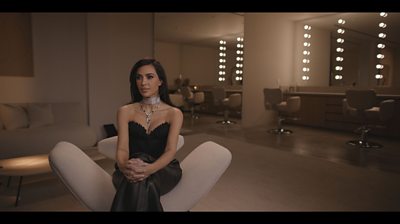
Kim Kardashian is one of the most recognisable and influential faces on the planet.
She was the last person to interview Elizabeth – for a profile in Harper’s Bazaar in 2011 – when the pair swapped stories about falling in and out of love under the press glare, their shared love for jewellery and the importance of family.
As a media personality, entrepreneur, activist and actress, there are few women better placed to understand what it’s like to be famous the world over – and to have your personal and professional life scrutinised daily – than Kim. She is an Executive Producer on Elizabeth Taylor: Rebel Superstar and was also interviewed for the series.
Tell us about interviewing Elizabeth Taylor, which would be her last interview…
“I was doing a shoot for Harper’s Bazaar and they said they’d love it to have a Cleopatra-themed cover, and that I could interview Elizabeth for the cover story. Everyone knew how much I loved her and I was so excited.
Interviewing her felt surreal, I was so nervous. Just to know we had a good time doing it. Elizabeth would laugh and say, “I can’t believe you know so much. I can’t believe you know more about my jewellery than I even remember.”
Do you remember when you first became aware of Elizabeth?
I first heard of Elizabeth Taylor in high school. My dad used to make us watch a black and white film on the weekends. Then we watched one with Elizabeth Taylor and I remember just wanting to know more about her. And then learning more and more and just falling in love.
Why did you want to be involved with this series?
“I just want people, especially young people, to know what a fighter she was, how she really didn’t care: she was going to help who she wanted to help, whether it was a good look or not, and whether whole teams and studios were telling her not to.
“She was such a fighter, a freedom fighter. And obviously that mixed in with the glitz and glam and the jewels …and everything that came along with her – I just think she’s fascinating.”
How has Elizabeth inspired your life?
She always stood for what she felt was the right thing and she was unapologetically herself – she was one of the first examples I saw of that. And she set the tone: she showed people that you could reinvent yourself.
She’s definitely had an effect on my life, she’s always been on my mood board. She’s the blueprint.
You are involved in law reform and activism as Elizabeth was. How has she inspired you?
I’ve always looked to her to motivate me. It doesn’t matter what’s acceptable to other people if you believe in it and that’s what you want to fight for. And you fight for those people who don’t have voices, to be their voice.
I think if you have a platform that you can use to talk about the issues that are really wrong with this world, then you’re shedding a light for so many people that otherwise they might not even know about.
Elizabeth has been such an inspiration to me. She was a huge driving force in paving the way for anyone in my position today. It’s not easy to be first, you know? And I love that there’s someone like her to look up to.
You and Elizabeth share a love of jewellery – tell us about that.
My cousin Cici, who is obsessed with all things pop culture and fashion, she would always talk to me about Elizabeth’s jewellery and would say, ‘when she was married to Richard he bought her this and she wore it here’. Just so many stories over the years of all of these amazing pieces that she acquired.
I just love how she loved jewellery.
How would you describe Elizabeth?
If there was one word to describe her it would be strength. She recognized that all the glamour the stuff and the life is secondary to who you are as a person.
She knew her power, and she used it to help other people.
Interview with Sharon Stone
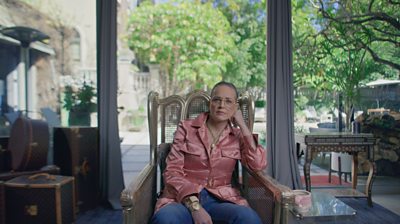
Sharon Stone is an actor, artist and activist. An admirer of Elizabeth’s craft, she first became friends with Elizabeth through her work campaigning for those with HIV/AIDS, and in 2020 she was honoured with the Legacy Award from the Elizabeth Taylor AIDS Foundation
Sharon rose to international recognition in the 1990s with her role in the film Basic Instinct. Her performance catapulted her to sex symbol status, and she has spoken publicly about the typecasting she faced as a result.
Her experience of the studio system echoes Elizabeth’s – both women were marketed to fit a narrative – and Sharon offers powerful insight into the struggles women have historically faced in the film industry.
How did you get to know Elizabeth?
The American Foundation for Aids Research asked me if I would fill in for a night and I ended up filling in for nearly 30 years. I was aware that I was stepping into some pretty big high heels. I’m inexorably linked to Elizabeth in our work, in our lives and in our intentions.
What sort of friend was she?
She was the first person to send me a 100 roses when I had my stroke.
People were really shocked by the intensity of our relationship and sometimes the vulgarity [swearing] in our relationship, because we made fun of each other. I think people thought, you can’t make fun of Elizabeth Taylor – they didn’t understand that we needed the brutalism because the thing we were doing [fighting for support for those with HIV/AIDS] was so brutal – and no one was really on our side.
What is Elizabeth’s legacy?
She was important. She was really important.
I think it’s interesting that someone who was groomed into the studio system, who didn’t get to live a real childhood with regular people, was herself so understanding and so informed. She stood up for her friends with quite a bit of courage.
You can use your fame to be a pillar of safety and decency. Elizabeth did that, and she and other men and women have set an example for me.
Tell us about your work with Elizabeth campaigning for those with HIV/AIDS
When I started, there were 11 million people with AIDS, and by the time the medicine really came, 40 million people [had] died. Forty million people.
My career had just taken off, and at that point my PR firm made it clear to me that taking this position was going to be detrimental to me, because no one did anything like that at that time, no one risked anything. We had so much violent – and when I say violent, I mean violent – resistance in the beginning.
Elizabeth and I were both under such heavy death threats in the beginning that the only way through it was this real kind of – we were like two warriors. I don’t know how to put it differently.
You and Elizabeth both experienced the studio system – tell us about that.
When it happened for me I was 32 years old, I was a grown woman who had travelled all over the world. I’d been a model and lived in all kinds of different circumstances, at all kinds of different levels of success and failure.
Elizabeth was groomed by the studio system from the time she was a little child. And when I say groomed, I mean everything: what you eat, what you do, what you say, where you go, who your friends are. You know, very few decisions are one’s own, in that type of circumstance.
There was never any time in her life when she wasn’t famous. And also, in Elizabeth’s era and the way she was groomed, she basically had to marry everybody she dated.
The job of the movie star is to inspire people, to provide that sense of place and worth and value – that if you work really hard, good things can happen. I’m a person who came from that, who became a movie star and made the American Dream. It was, it is, a big deal, right? And it was a big deal to the American public.
The fans enabled her to have that power. And the press enabled her to have that power. Because she did her job. You know, she went and she did the press and she talked to the fans and she did her job. From the age of 11. She earned her paycheck.
What were Elizabeth’s strengths as an actress?
She wasn’t afraid of her own power. On Butterfield 8 she turns around in a white slip and you just want to look – you’re impaled by her gravitas, the power of her, in the character.
Elizabeth was a master of that. She could ride an energy wave and have the confidence to stay in it. She stood the ground of the thing she was portraying, she really understood what she was doing. She understood it from film to film.
Elizabeth was the first actress to receive a $1million for her starring role in Cleopatra. How significant was that?
They [Hollywood] never wanted to pay a woman a million dollars. When I tried to get over a million dollars, it was like, are you insane? And it was like that for decades. Decades. We don’t pay women a million dollars.
I think she knew her worth.
It’s called showbusiness. She understood that her global box office clout could bring in the people that would pay for the making of that movie – and then some. Like, who else are you going to get to play Cleopatra? Who else do you know who’s going to work and you’re going to have a hit, upfront?
It wasn’t going to be Kirk Douglas, right? It wasn’t going to be Spartacus. It cost a fortune to make that movie. They had to have a woman who they knew had the box-office power.
Elizabeth was famed for her beauty, but when she starred in Who’s Afraid of Virginia Woolf? she played a relatively overweight, much older woman. How brave was that in that era?
Oh, my God, it’s just so beautiful and so brilliant and so dangerous. And I just feel like we’ve lost this. It’s like people are afraid of dangerous performances. It’s like, come on! You know this is so where it’s at.
Who’s Afraid of Virginia Woolf? Is an absolutely fascinating screenplay, I thought they were all perfect in it. And that the way she came undone, and her hair becomes slightly askew – it just makes you afraid, it’s so compelling. She knows what she’s doing. She knows how she’s throwing her body into the camera and she knows how she’s doing it, with such feral intention.
By being ‘Elizabeth Taylor and Richard Burton’ they had lost a completely different life. And by losing that other life, they were losing each other. And I think that’s exactly what was happening in the film.
I think for the two other actors, they recognized the terror – that that’s what the business of acting can do to you. There can actually be a machine that chews you up and spits you out. And the thing that remains is the thing that is needed.
Both options are something that, if you really love your craft and you really love your life, you’re just, you’re uh, you know, and it’s such a, such a raging, terrorizing ride.
What is fame like?
All of a sudden, you’re so famous that the world is attacking you. That’s what fame is like. That’s how fame happens. It’s like a light switch [clicks fingers] and there’s no lessons. There’s no money. There’s no security. There’s no nothing. And it’s just like a light switch. And then it never goes away.
Can you make it go away?
I tried. I tried to leave town, get married, be a regular citizen. But you’re still super famous. You can go anywhere and it’s exactly the same. No, you can’t make it go away.
People have a lot of opinions about the life you should or shouldn’t have when you have fame, and you have to navigate that. There’s always that little bit of division between yourself and the fame self, which is like a separate identity. It’s a little bit like your Superman cape, you know, like you go into the phone booth, and you change into the fame self.
No matter how much it’s a normal part of your existence, there’s always a part of you that just isn’t that public thing. That’s just regular you.
Interview with Dame Joan Collins
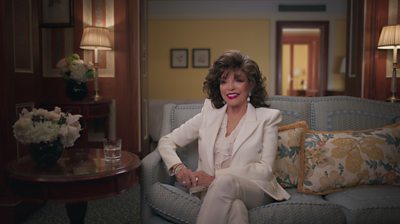
Dame Joan Collins is one of the last surviving stars of Hollywood’s Golden Age.
A contemporary of Elizabeth Taylor, the two young women met on the studio lot, crossed paths frequently throughout their careers and developed a friendship which would last many decades. Having found fame within the studio system they starred in some of the era’s biggest productions – eventually competing for the iconic role of Cleopatra.
Dame Joan is an authority on the world Elizabeth inhabited from childhood and has rare insight into the person she was away from the spotlight.
The two actresses shared the screen in what would be Elizabeth’s final film role in These Old Broads – a film written by Elizabeth’s one-time stepdaughter, Carrie Fisher, and based in part on the turbulent relationship between her mother, Debbie Reynolds and Elizabeth.
Growing up, what did you think of Elizabeth Taylor?
I adored her, as did all my school friends. She was part of our lives as young girls. We basically grew up with her, with Elizabeth Taylor. She was a real icon.
Do you remember the first time you saw Elizabeth on screen?
It was the first one I ever saw, A Date With Judy. I just remember it was so full of youth and Technicolor, and this was in a rather dim period in England when everything was grey, and we still had rationing. So, it was a burst of colour and light.
What was your experience of the studio system like?
I was bought. I was under contract to J Arthur Rank in England from the time I was 17, then Darryl Zanuck saw me and bought me for 20th Century Fox. I went under contract for seven years. As soon as I arrived, they rented me a car. They rented an apartment for me. They rented the furniture. They told me what to do, what to wear, where to go, who to go out with. I was completely at their mercy.
What was Elizabeth like as a person?
I always found her to be a very interesting woman, ever since I first met her.
I met her when I first went to Hollywood, and we got along really well. She was a real girl’s girl as well as being a man’s girl. She was very vibrant, and she had a great laugh, a great sense of humour. And we talked about, you know, all sorts of things that young girls talk about: clothes, hair, makeup, boys, movies.
When I got my fourth divorce, Elizabeth sent me a present. I can’t remember what it was, it was something silver, a frame or something with a little note saying, “I’m still ahead by three!”
Why did Elizabeth get married to her first husband, Nicky Hilton, so young?
She got married at 18 because she wanted to get away from home, which is why I got married at 18. And well, because, you know, the different laws and morals – if you were involved with a man, you know, intimately, you had to marry him. That was the way it was. And I think Elizabeth liked the idea of marriage.
Elizabeth’s love of jewellery is well-known, did that come across in your interactions with her?
One day, I was standing outside the set of These Old Broads waiting to go on when Elizabeth said, “I love your bracelets”. And I said “Yes”. She said, “You wear them a lot” and I said, “Yeah, I never take them off, even when I go through customs”. She said, “Let me try them on” and I said, “No, Elizabeth, no, they don’t come off.” I was lying. They do come off. But I didn’t want to lend them to her [she previously explains Elizabeth had a habit of borrowing people’s jewellery and not giving it back].
She didn’t mean to do it. She just loved to be acquisitive. She just loved things. She admitted it, but she did it in such a sweet way.
The press wasn’t always kind to Elizabeth… tell us about that.
They said horrible things about Elizabeth. Horrible, horrible things. I mean, you know, she was this icon. She was, you know, the last great star. But the way she was massacred in the press was pretty shocking.
Why did Elizabeth attract so much attention?
Apart from her beauty and fame, I think that having this really – not scandalous, but very interesting private life that everybody was interested in – gave her an edge. Most actors, film stars that people are interested in have a kind of racy private life. And I think that was part of it.
Do you think Elizabeth liked being famous?
Elizabeth had [fame] for a long time. And I think maybe deep down, there was something about it that she enjoyed. I think she enjoyed being a star. I mean, who else would have a brain operation, have their head shaved and be photographed by the top photographer of the day to be on the cover of Life magazine? I certainly wouldn’t. And I don’t think you’ll find many actresses who would want to do that. But I do think she enjoyed the spotlight.
What was it like making a film together?
During the making of These Old Broads we all got along like a house on fire. Elizabeth, Debbie Reynolds, Shirley MacLaine. We were just all of us really great pals.
How would you sum up Elizabeth’s legacy?
Without question she was one of the last great stars. Who today comes anywhere close to having her glamour, her charisma and her talent? Elizabeth was one of a kind.
We were all really sad when we knew Elizabeth was dying because she was part of our lives since we were young girls. She was a real icon. You know, they bandy that word about, ‘icon’, you know. There aren’t that many.
Contributor Biographies
Paris Jackson
Elizabeth Taylor’s god-daughter

Paris on Elizabeth: “Elizabeth kind of paved the way for other people with that kind of integrity and power to come forth. And you also can’t put a price on finding life purpose.”
Paris Jackson is a model, actress, singer and activist. Her father, Michael Jackson, was a close friend of Elizabeth Taylor, and chose Elizabeth to be Paris’ godmother when she was born.
Paris believes that her father recognised the inevitable scrutiny that his children would be subjected to by the world’s media, and knew that Elizabeth – in the public eye from the age of nine – would be uniquely placed to support his daughter.
Paris has fond childhood memories of visiting Elizabeth at her Bel Air home. She recollects time spent with Elizabeth’s beloved cat Fang, and how she loved to admire the knickknacks and curiosities that filled her godmother’s home.
She was 12 when Elizabeth passed away, but has followed in her godmother’s footsteps, using her platform to help those with HIV/AIDS. At 19, she became an ambassador for the Elizabeth Taylor AIDS Foundation. In 2023 she co-chaired the Elizabeth Taylor Ball to End AIDS in Los Angeles.
Elizabeth continues to serve as an inspiration for Paris in her activism, as she carries forward her godmother’s “greatest wish” to end HIV/AIDS globally.
Chris Wilding
Elizabeth’s son

Chris on Elizabeth: “As her son, I’m immensely proud of her. She was a formidable woman.”
Chris Wilding is Elizabeth’s second son with second husband Michael Wilding. This is the first time he has spoken about his mother on camera.
Born on 27 February 1955 on Elizabeth’s birthday, he has until now largely stayed out of the public eye.
Chris shares his personal memories, including some of the more difficult moments in their lives, and offers unparalleled insight into the “complex” woman he knew as Mom.
Less than two years old when his parents divorced, as an older child he would become close to Elizabeth’s fifth husband Richard Burton and speaks candidly about the tempestuous marriage between his mother and stepfather. Chris also opens up about the impact of the unrelenting media attention surrounding his family and how intense scrutiny took a heavy toll on his mother.
Naomi Wilding
Elizabeth Taylor’s granddaughter
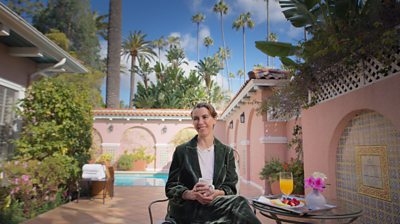
Naomi on Elizabeth: “My grandmother and I, we used to argue about feminism. She thought that feminism meant like anti-feminine, but I think she was actually the perfect example of somebody who could embrace everything that it meant to be a woman and find power in it.”
The daughter of Elizabeth’s eldest child Michael Wilding Jr, Naomi paints an intimate and emotional portrait of her ‘snuggly granny”.
Naomi, who grew up in rural Wales, would spend memorable summers in Los Angeles visiting her grandmother, raiding Elizabeth’s wardrobe and playing with her famed jewels. She moved to New York in her 20s, before settling in LA where she lived for a time with Elizabeth in her Bel Air home.
She argues that Elizabeth paved the way for today’s influencers and reality stars, understanding the symbiotic relationship between star and press. She explores her grandmother’s complicated relationship with fame having lived the majority of her life as front-page news, and how she understood the power of celebrity but also craved anonymity, especially when ‘the most beautiful woman in the world’ was fat shamed by the media.
Naomi is passionate about continuing her grandmother’s work in the fight against HIV/AIDS as an ambassador of The Elizabeth Taylor AIDS Foundation.
Aileen Getty
Elizabeth’s Taylor’s daughter-in-law
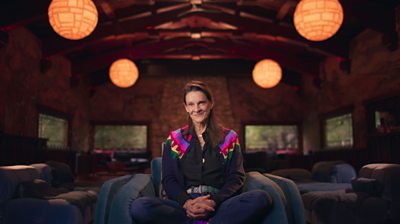
Aileen on Elizabeth: “She’s the OG godmother of agency, of power, of being who you want to be when you want to be it.”
Aileen was married to Elizabeth’s son Christopher Wilding from 1981 until 1989. Part of the Getty dynasty and granddaughter of oil tycoon J. Paul Getty, she had a strong bond with Elizabeth, whom she referred to as mom.
At the time she joined the family Elizabeth was struggling with drug and alcohol addiction, and she watched as Elizabeth used her platform to speak openly about rehab, one of the first celebrities to do so.
In 1985 Aileen tested positive for HIV. In a revealing interview, she discusses her diagnosis, the climate of fear and shame of being HIV positive in the 1980s, and how Elizabeth – who at that time was among the first celebrities to bring attention to the growing HIV/AIDS epidemic – was her greatest support.
George Hamilton
Elizabeth’s friend and former boyfriend
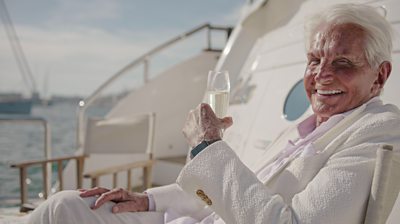
George on Elizabeth: “‘I just saw a woman that wanted to be happy, who really struggled with the idea of being famous and wanted to do something good with it.”
Movie star and TV actor George Hamilton first met Elizabeth Taylor when they were teenagers under contract at the same studio in Hollywood. They formed a lifelong friendship, eventually dating for a year in the mid-80s.
George, known for his playboy image, starring film roles and the soap opera Dynasty, would often compete with Elizabeth to achieve the deepest tan. In his insightful and entertaining interview, he sheds light on what it was like to date the most famous woman in the world, and offers unique insight into Elizabeth’s character, marriages and complex relationship with fame and the press.
When Elizabeth was in her 50s, she and George starred together in the film Poker Alice and they began dating – a whirlwind year of private jets, yachts and copious luggage (the pair packed more than 50 cases between them when they travelled) – and the occasional argument.
It was around this time that Elizabeth used her star power to bring global attention to the deadly AIDS epidemic. George was with her as she took on Washington and lobbied President Reagan to speak publicly about the disease.
Dr. Anthony Fauci
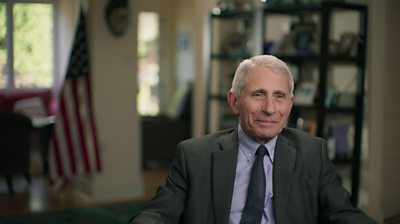
Dr Fauci on Elizabeth: “Ronald Reagan still had not uttered the word AIDS to call attention to HIV and it was clear that Elizabeth was getting a little bit annoyed. And then the word got out that one day she just said, ‘Okay Ronald, enough is enough. You’ve got to get out there and talk about it’.”
Dr. Anthony Fauci was Director of the National Institute of Allergy and Infectious Diseases from 1984 to 2022 and acted as Chief Medical Advisor to seven consecutive U.S. presidents, including Ronald Reagan, Barack Obama and Donald Trump. He worked closely with Elizabeth in her campaign to help those with HIV/AIDS.
He first met Elizabeth in the mid-1980s and was impressed by her knowledge about HIV/AIDS and her commitment to challenging public perceptions of those living with the disease.
Elizabeth was a friend of Ronald Reagan from his Hollywood days and spent time with him in Washington during her seventh marriage. The President had refused to address the disease publicly, even when their mutual friend actor Rock Hudson contracted AIDS and died.
Elizabeth tirelessly lobbied ‘Ronnie’ to give his first public speech on AIDS, and Dr. Fauci credits her in being instrumental in shifting the government’s slow response to the crisis – a big deal, he says, for those on the frontline of the epidemic, and a move that undoubtedly saved lives.
Todd Fisher
Elizabeth’s step-son
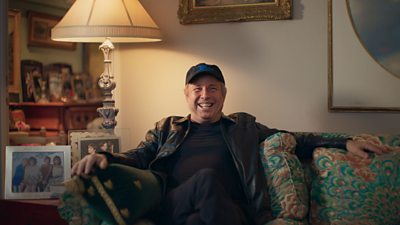
Todd on Elizabeth: “I mean, it’s great drama. Her real life is great drama and the world’s hanging on the edge of their seat to see what’s gonna happen next.”
Todd Fisher is part of Hollywood royalty: his sister was Carrie Fisher, his father was singer Eddie Fisher and his mother was Debbie Reynolds. Elizabeth would become his stepmother following her controversial fourth marriage to Todd’s father.
He talks openly about the impact of his father’s affair with Elizabeth – not only on him, sister Carrie, and mother, Debbie (Elizabeth’s best friend), but also on the world at large, at a time in the late 1950s when marriage and family were considered the pillars of American society.
The illicit relationship would, as Todd explains in the series, result in unprecedented public outrage and an opportunity for the studio to exploit.
Margaret O’Brien
Elizabeth’s friend and Hollywood contemporary
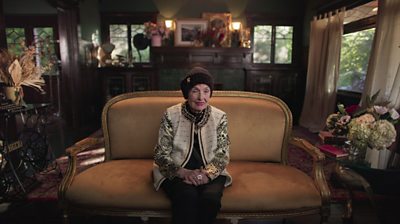
Margaret on Elizabeth: “If you were under contract, publicity men were assigned to you – and any bad scandals were not allowed at MGM. For somebody like Elizabeth dating was very difficult.”
One of the few remaining Hollywood stars from the Golden Age of Hollywood, Margaret became lifelong friends with Elizabeth after meeting on the studio lot at MGM.
Margaret has a unique insight into what life was like for Elizabeth growing up in the spotlight and under the strict control of the studio system – a place where dreams were made, but “once you signed a contract, the studios really owned you” – and the actors were tightly controlled, with children treated like adults.
No scandals were permitted, actors were placed on diets, and the perfect image was engineered by a huge publicity team.
Bill Misenhimer
First Executive Director of AIDS Project Los Angeles
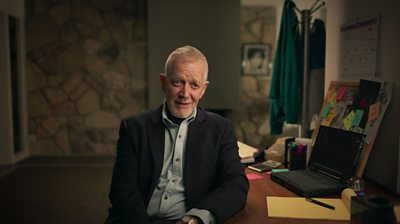
Bill on Elizabeth: “She made a lot of calls. Really, really famous people wouldn’t get involved – and Elizabeth would get so mad. She would get so mad that people would say no to her.”
Bill Misenhimer worked closely with Elizabeth from the early years of the AIDS epidemic until she died in 2011.
In 1985 Bill was organising a fundraiser in support of those living with the disease. He approached Elizabeth Taylor, who agreed to be part of the benefit – a groundbreaking move at a time when most people were too fearful to speak up for gay people, whom he says were regarded as “throw-away communities”.
He emphasises Elizabeth’s importance in calling attention to the epidemic and to government inaction, shifting attitudes towards the disease, saving lives and changing the course of the epidemic.
Sally Morrison
Elizabeth’s publicist and friend
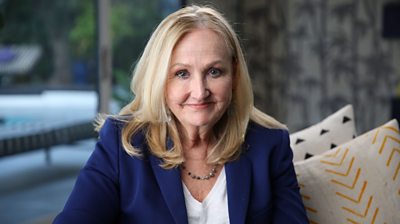
Sally on Elizabeth: “Her life was bigger than any film. More controversial. More drama, more love, more passion.”
Sally shares her experience of the “unplugged” Elizabeth and offers an insider’s perspective on the worldwide obsession with her private life.
She discusses the global furore created by Elizabeth and Richard Burton’s then-scandalous love affair and how the drama that seeped into her real life, and with a publicist’s eye describes the power of that controversy and how it contributed to the public’s fascination with Elizabeth.
Sally witnessed Elizabeth wield the fame she had amassed in the fight against AIDS. She remembers the reluctance of President Ronald Reagan to even say the word AIDS in public, and the ways Elizabeth was able to use her celebrity as political capital. She also notes how Elizabeth drew upon her experience as an actress and a former senator’s wife to deliver important speeches in Congress, approaching each one like a performance.
Gianni Bozzacchi
Elizabeth Taylor’s personal photographer
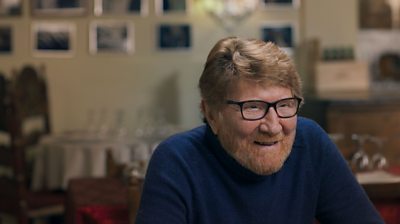
Gianni on Elizabeth: “The job was to publicise, through the picture, Elizabeth and Richard. I was always to attain the most sensuality into the picture. And she loved that.”
A young set photographer on the film The Comedians, Gianni was invited by Elizabeth Taylor and Richard Burton to join their entourage and “little by little became part of the family”.
Gianni shares memories of his time with Elizabeth and Richard – the original power couple – and her role as “the superstar”. His photographs also offer a glimpse into the couple’s quieter moments, away from the outside world. Witnessing their relationship up close, however, Gianni was also aware of the mounting tension between Elizabeth and Richard, and how her stardom began to take a toll on their marriage.
As their relationship became a global obsession, he reveals the struggles they faced, with the Vatican denouncing the pair for their ‘erotic vagrancy’.
Jorjett Strumme
Elizabeth Taylor’s stylist, assistant and friend
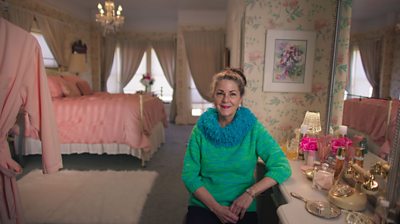
Jorjett on Elizabeth: “You weren’t supposed to be having sex when you weren’t married. We take that all for granted now. But in those days, that was like, you’re bad. She was bad.”
Jorjett worked with Elizabeth in the 1980s and early 90s and became part of her inner circle.
From Elizabeth’s early years in Hollywood, playing roles which required kissing men much older than her, to her undying belief in romance, Jorjett shines a light on the woman beneath the glamorous movie star image, who was “kind, thoughtful” and not afraid to make her voice heard.
She speaks movingly about the tragedy Elizabeth faced in her early years – from the domestic abuse she experienced in first marriage to becoming a widow at the age of 26. She also recalls how Elizabeth was cast as ‘the bad girl’ and thrown into the centre of one of Hollywood’s biggest scandals when she got together with her best friend’s husband, and the explosive impact of Elizabeth and Richard Burton’s love affair as the world became increasingly obsessed with what was the first celebrity power couple, ‘Liz and Dick’.
Jorjett witnessed Elizabeth’s voice in action countless times during their ten years working together, but she was also present for some of the challenges Elizabeth faced in private. In a touching interview, Jorjett also describes Elizabeth’s struggle with addiction and her ability to take “unbelievable amounts” of prescription drugs and alcohol, saying: “I almost feel like it was a game of Russian roulette”.
José Eber
Elizabeth’s hair stylist and friend
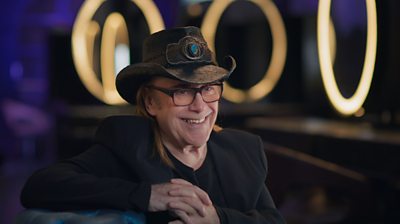
José on Elizabeth: “When she launched her perfume, did we travel the world? Yes, we did. But what she did that nobody knew in every single city, every time, we stopped at AIDS hospices.”
After moving to the U.S. from Paris in 1975, José made a household name for himself as a Hollywood hair stylist, working with the likes of Cher, Farrah Fawcett and Bette Davis.
An admirer of Elizabeth Taylor, he received a call from her assistant in 1984 inviting him to her Bel Air home and started working as her personal hair stylist, becoming a part of her daily life, travelling the globe and brushing shoulders with royalty. José was Elizabeth’s best man at her eighth and final wedding to Larry Fortensky.
He recalls privately visiting AIDS hospices with Elizabeth in every city of her perfume tour and her compassion in interactions with patients – hugging and holding their hands at a time when AIDS was considered a death sentence and fear of physical contact was widespread .
Kate Andersen Brower
Elizabeth Taylor’s biographer
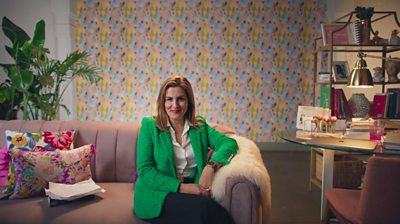
Kate on Elizabeth: “She did feel some guilt and shame, but she wouldn’t apologise for it, and I think that that’s really key. She said she had no regrets… I’m not sure that it’s true, but she had nothing that she would admit to regretting.”
Kate Andersen Brower is an American journalist and author. A writer for The New York Times and The Washington Post, her book Elizabeth Taylor: The Grit and Glamour of an Icon is the first authorised biography of Elizabeth Taylor.
In her role as contributor and consultant across the series, Kate’s unmatched expertise and authoritative insight, spanning all seven decades of Elizabeth’s life story, makes for impactful viewing.
Elizabeth Taylor on BBC TV and BBC iPlayer
Films
Cat on a Hot Tin Roof
Saturday 28 September, 9.45am – BBC Two and BBC iPlayer
Thursday 3 October, 9pm – BBC Four and BBC iPlayer
More films TBC
Documentaries
Elizabeth Taylor: England’s Other Elizabeth
Thursday 3 October, 8pm – BBC Four and BBC iPlayer
More documentaries TBC

